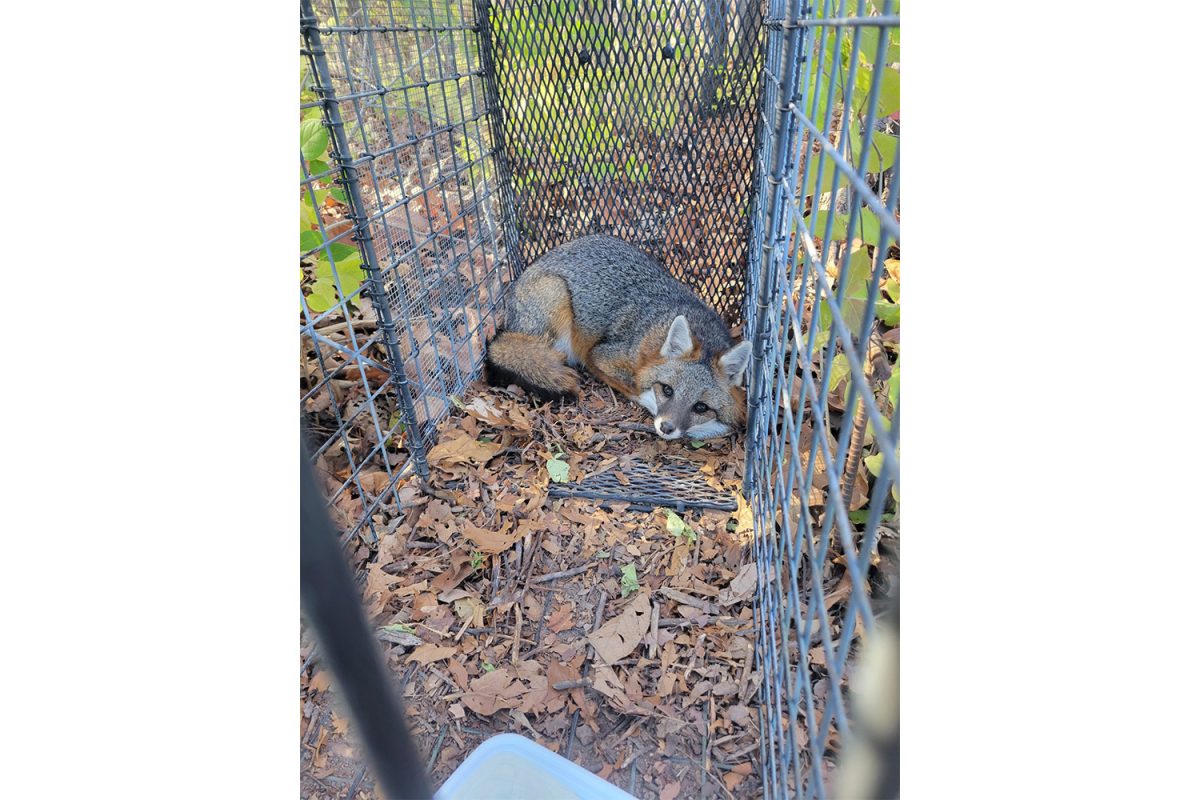The Iowa Department of Natural Resources started a pilot study on Nov. 4 to understand why the gray fox population in Iowa has declined by an estimated 90 percent over the last three decades. The Iowa DNR is only actively tracking one gray fox so far.
The gray foxes differ from their red fox cousins in more than just fur color. Gray foxes are smaller, weighing only 10 to 12 pounds. They have patches of reddish tan fur on the side of their neck and body. They also have a black line that extends to the top of their tail with black and white markings on their face.
Because the foxes are smaller, this leads them to be primarily nocturnal and wary of other species. The gray foxes are a forest species originally found throughout eastern Iowa, specifically northeast Iowa.
Vince Evelsizer, a furbearer and wetland biologist for the IDNR, said the study seeks to find the specific causes of mortality in the gray fox population, and because there has never been a study in Iowa on gray foxes, there are more questions than answers.
In 2015, gray foxes were listed as a species of greatest conservation need in Iowa.
Evelsizer said changing habitat is the number one factor they are examining within the state because of land alteration over the years which pushes gray foxes into urban areas. Other factors being contemplated as possible causes are disease and predator competition.
A decline in the gray fox population is correlated with an increase in the population of coyotes, raccoons, and bobcats, according to Evelsizer.
Gray foxes are also particularly susceptible to diseases like canine distemper virus, a contagious virus that attacks the respiratory, gastrointestinal, and nervous systems of a variety of animals such as dogs, coyotes, foxes, raccoons, and more. Canine distemper virus can be fatal to gray foxes.
These factors are only speculation as to why the decline may be happening.
The exact population count of gray foxes in the state is unknown. However, estimates are determined through two annual surveys: the Iowa Bowhunter Observation Survey in the fall, and a Spring Spotlights Survey. These surveys take into account what hunters as well as Iowa DNR wildlife and law enforcement staff view during each season.
The Bow Hunter Observation Survey allows the Iowa DNR to standardize the number of sightings with the amount of time bowhunters are out in the wild. This creates an index that allows them to estimate population size.
Evelsizer said these surveys put the gray fox population somewhere in the hundreds rather than the thousands which was seen in the 1980s and 1990s.
This survey data is what accounts for the 90 percent decline, however, it may be even lower than this. Iowa DNR Wildlife Technician Dave Hoffman said he could only confirm six to eight gray foxes in the state from video recordings.
Hoffman said the surveys documented gray foxes near deer, turkeys, and select furbearers in the state. He said in the 1980s and 1990s there used to be over 1,200 grays, but that number has dropped down to one or even zero a year.
He and Evelsizer said there are two main ways the public can help this research. First is to call the Iowa DNR if they see gray foxes or catch video of them on cameras. This information will help researchers identify their gray fox habitat.
The second way the public can help is by trapping gray foxes. The Iowa DNR is offering trappers a $400 reward if they catch a gray fox alive and healthy. Evelsizer said they are putting collars on these gray foxes which house a GPS and VHF transmitters.
This information allows researchers to see what the fox is utilizing for habitat and if one dies they can analyze the cause of death.
RELATED: New blood donor assessment increases eligibility with new criteria
Evelsizer said using trappers seems to be the most efficient way of getting gray foxes to identify their habitat locations. Researchers are also looking into the feasibility of trail camera surveys which would be a more passive way of identifying where gray foxes are present.
So far, one gray fox was caught by a trapper in southeastern Iowa, which was given a collar for tracking. The study is still in its pilot stage meaning there is limited funding.
Each collar costs anywhere from $2,500 to $3,000 each. The five collars currently at Iowa DNR’s disposal were bought by the Iowa Cooperative Fish and Wildlife Research Unit at Iowa State University.
Evelsizer says that the pilot phase of the study could last up to two years until they catch more gray foxes. At that time, a larger study with more funding may take place. Evelsizer said a minimum of 15 to 20 gray foxes would be needed to get a full picture of what is happening to the population.









